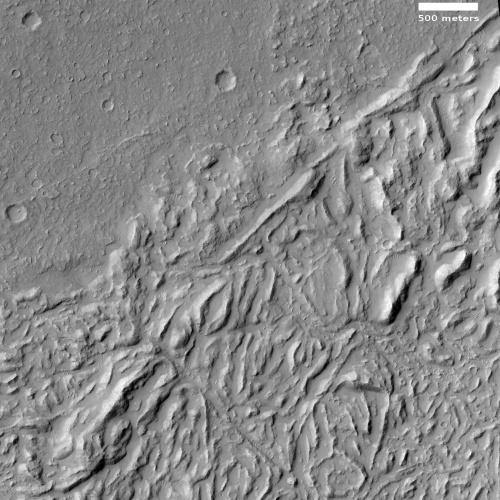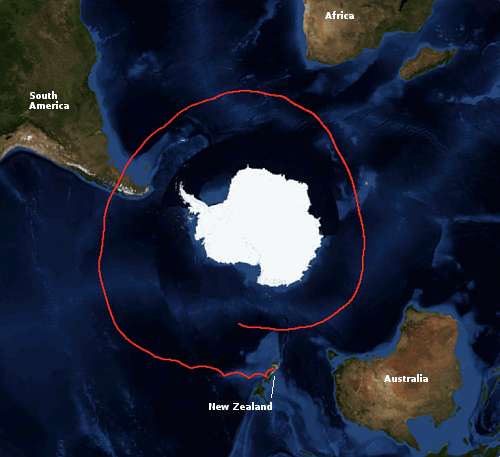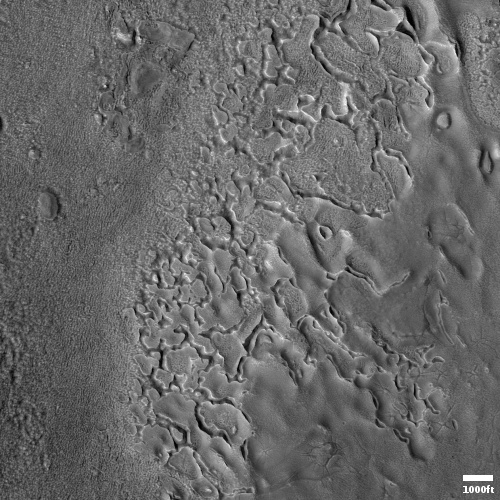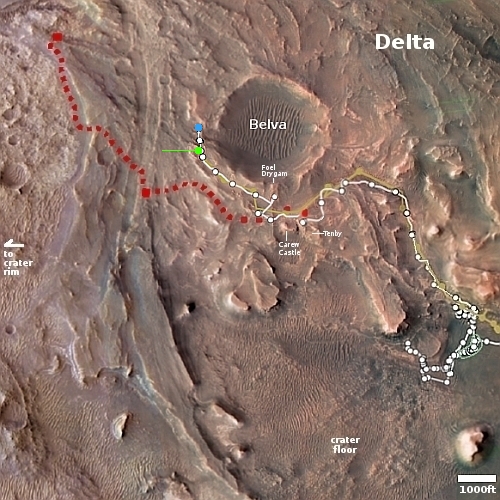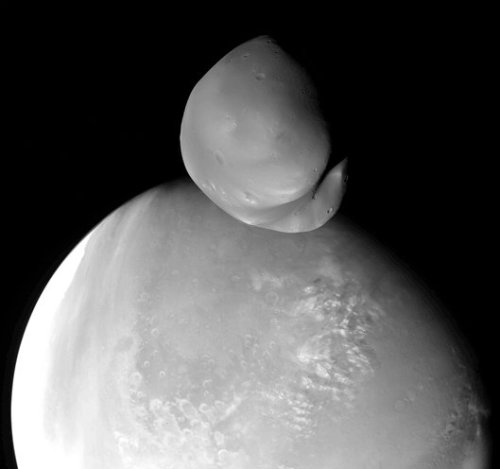April 26, 2023 Quick space links
Courtesy of BtB’s stringer Jay.
- Interesting Twitter discussion about the Hakuto-R1 lunar landing failure
The most interesting comment, based on inconclusive and confusing data, is this: “From the Doppler profile, it looks like it descended, landed, then something went badly wrong and it accelerated back off the surface – just speculation based on radio obs.”
- ULA CEO Tory Bruno publishes paper outlining his thoughts on maintaining U.S. space assets agains attack
Bruno’s approach is very thoughtful and clearly presented. He concludes that the best approach is the one with the most variety, with both low and high orbit constellations providing communications and data. Why am I not surprised?
- The spacewalk plan to shift two solar panels on China’s Tiangong-3 space station to better locations
This effort is reminiscent of similar things the Russians did on both its Salyut and Mir stations.
- Rocket Lab says its preparations for two launches in New Zealand of NASA’s TROPICS satellites are on schedule
The first is scheduled for May 1, 2023 (New Zealand time), with the second on May 16th.
- Russia official extends its partnership on ISS until at least 2028
No surprise. What this really tells us is that Russia’s own space station is continuing to fall behind schedule, and will not be ready for launch by 2027, as previously predicted.
- Russia touts strength of Chinese-Russian space partnership by citing visit by official to China
Yeah, right. And I have a bridge in Brooklyn I’d like to sell you. The Chinese will make nice noises, but they know that they can expect nothing from Russia. If something shows up, great, but it would be dangerous to depend on it.
- For the first time since 2021, Virgin Galactic’s SpaceShipTwo (VSS Unity) completes a glide test flight
Their next goal is a powered flight with six crewmembers, targeting the second quarter of this year.
Courtesy of BtB’s stringer Jay.
- Interesting Twitter discussion about the Hakuto-R1 lunar landing failure
The most interesting comment, based on inconclusive and confusing data, is this: “From the Doppler profile, it looks like it descended, landed, then something went badly wrong and it accelerated back off the surface – just speculation based on radio obs.”
- ULA CEO Tory Bruno publishes paper outlining his thoughts on maintaining U.S. space assets agains attack
Bruno’s approach is very thoughtful and clearly presented. He concludes that the best approach is the one with the most variety, with both low and high orbit constellations providing communications and data. Why am I not surprised?
- The spacewalk plan to shift two solar panels on China’s Tiangong-3 space station to better locations
This effort is reminiscent of similar things the Russians did on both its Salyut and Mir stations.
- Rocket Lab says its preparations for two launches in New Zealand of NASA’s TROPICS satellites are on schedule
The first is scheduled for May 1, 2023 (New Zealand time), with the second on May 16th.
- Russia official extends its partnership on ISS until at least 2028
No surprise. What this really tells us is that Russia’s own space station is continuing to fall behind schedule, and will not be ready for launch by 2027, as previously predicted.
- Russia touts strength of Chinese-Russian space partnership by citing visit by official to China
Yeah, right. And I have a bridge in Brooklyn I’d like to sell you. The Chinese will make nice noises, but they know that they can expect nothing from Russia. If something shows up, great, but it would be dangerous to depend on it.
- For the first time since 2021, Virgin Galactic’s SpaceShipTwo (VSS Unity) completes a glide test flight
Their next goal is a powered flight with six crewmembers, targeting the second quarter of this year.
On Christmas Eve 1968 three Americans became the first humans to visit another world. What they did to celebrate was unexpected and profound, and will be remembered throughout all human history. Genesis: the Story of Apollo 8, Robert Zimmerman's classic history of humanity's first journey to another world, tells that story, and it is now available as both an ebook and an audiobook, both with a foreword by Valerie Anders and a new introduction by Robert Zimmerman.
The print edition can be purchased at Amazon or any other book seller. If you want an autographed copy the price is $60 for the hardback and $45 for the paperback, plus $8 shipping for each. Go here for purchasing details. The ebook is available everywhere for $5.99 (before discount) at amazon, or direct from my ebook publisher, ebookit you don't support the big tech companies and the author gets a bigger cut much sooner.
The audiobook is also available at all these vendors, and is also free with a 30-day trial membership to Audible.
"Not simply about one mission, [Genesis] is also the history of America's quest for the moon... Zimmerman has done a masterful job of tying disparate events together into a solid account of one of America's greatest human triumphs."--San Antonio Express-News
Pushback: Student’s lawsuit against college officials for suppressing her First Amendment rights moves forward

Maggie DeJong, willing fight back hard.
Bring a gun to a knife fight: Though she had quickly forced her school to back down from trying to blacklist her, as described in a previous blacklist story in 2022, Maggie DeJong has now won a major court decision with a ruling on March 20, 2023 by the U.S. District Court in the Southern District of Illinois that her lawsuit against three administrators at Southern Illinois University Edwardsville (SIUE) can go forward.
More important, the ruling stated [pdf] that these three administrators — Jamie Ball (director for Equal Opportunity, Access and Title IX Coordination), Randall Penbrook (school chancellor), and Megan Robb (her teacher) — do not qualify in almost all circumstances for qualified immunity. They are liable for their actions in violating DeJong’s constitutional rights, including her right to free speech.
This is what happened in 2022: These officials issued three “no contact” orders against DeJong, forbidding her to have any contact with three co-students in her program, simply because she had religious and political opinions they disagreed with and did not wish to hear. This orders essentially blacklisted her from the program, because of its small nature, and were literally a priori gag orders on her right to freely express her opinions. The officials also admitted that DeJong had violated no school policy, nor did they provide her any due process before issuing the orders. When challenged by DeJong’s lawyers, the university quickly realized the utter illegality of these orders, and cancelled them.
You can read DeJong’s lawsuit complaint here [pdf]. Its most important aspect is that it is not suing Southern Illinois University but the actual individuals who committed the oppressive acts. » Read more

Maggie DeJong, willing fight back hard.
Bring a gun to a knife fight: Though she had quickly forced her school to back down from trying to blacklist her, as described in a previous blacklist story in 2022, Maggie DeJong has now won a major court decision with a ruling on March 20, 2023 by the U.S. District Court in the Southern District of Illinois that her lawsuit against three administrators at Southern Illinois University Edwardsville (SIUE) can go forward.
More important, the ruling stated [pdf] that these three administrators — Jamie Ball (director for Equal Opportunity, Access and Title IX Coordination), Randall Penbrook (school chancellor), and Megan Robb (her teacher) — do not qualify in almost all circumstances for qualified immunity. They are liable for their actions in violating DeJong’s constitutional rights, including her right to free speech.
This is what happened in 2022: These officials issued three “no contact” orders against DeJong, forbidding her to have any contact with three co-students in her program, simply because she had religious and political opinions they disagreed with and did not wish to hear. This orders essentially blacklisted her from the program, because of its small nature, and were literally a priori gag orders on her right to freely express her opinions. The officials also admitted that DeJong had violated no school policy, nor did they provide her any due process before issuing the orders. When challenged by DeJong’s lawyers, the university quickly realized the utter illegality of these orders, and cancelled them.
You can read DeJong’s lawsuit complaint here [pdf]. Its most important aspect is that it is not suing Southern Illinois University but the actual individuals who committed the oppressive acts. » Read more
Frozen waves of lava on Mars
Cool image time! The picture to the right, cropped and reduced to post here, was taken on January 15, 2023 by the high resolution camera on Mars Reconnaissance Orbiter (MRO). It shows an area where the ground suddenly transitions from a crazy quilt of criss-crossing hollows and ridgelines to a very flat and smooth plain.
The location is at 21 degrees south latitude, so this is in the dry equatorial regions. Though it has a small resemblance to the chaos terrain that is found in many places on Mars, mostly in the mid-latitudes where glaciers are found, the scale here is too small and the ridges and canyons are not as sharply drawn. While chaos terrain usually forms sharply defined large flat-topped mesas with steep cliffs, here the ridges are small and the slopes to the peaked tops are somewhat gentle.
» Read more
Cool image time! The picture to the right, cropped and reduced to post here, was taken on January 15, 2023 by the high resolution camera on Mars Reconnaissance Orbiter (MRO). It shows an area where the ground suddenly transitions from a crazy quilt of criss-crossing hollows and ridgelines to a very flat and smooth plain.
The location is at 21 degrees south latitude, so this is in the dry equatorial regions. Though it has a small resemblance to the chaos terrain that is found in many places on Mars, mostly in the mid-latitudes where glaciers are found, the scale here is too small and the ridges and canyons are not as sharply drawn. While chaos terrain usually forms sharply defined large flat-topped mesas with steep cliffs, here the ridges are small and the slopes to the peaked tops are somewhat gentle.
» Read more
Now available in hardback and paperback as well as ebook!
From the press release: In this ground-breaking new history of early America, historian Robert Zimmerman not only exposes the lie behind The New York Times 1619 Project that falsely claims slavery is central to the history of the United States, he also provides profound lessons about the nature of human societies, lessons important for Americans today as well as for all future settlers on Mars and elsewhere in space.
Conscious Choice: The origins of slavery in America and why it matters today and for our future in outer space, is a riveting page-turning story that documents how slavery slowly became pervasive in the southern British colonies of North America, colonies founded by a people and culture that not only did not allow slavery but in every way were hostile to the practice.
Conscious Choice does more however. In telling the tragic history of the Virginia colony and the rise of slavery there, Zimmerman lays out the proper path for creating healthy societies in places like the Moon and Mars.
“Zimmerman’s ground-breaking history provides every future generation the basic framework for establishing new societies on other worlds. We would be wise to heed what he says.” —Robert Zubrin, founder of the Mars Society.
All editions are available at Amazon, Barnes & Noble, and all book vendors, with the ebook priced at $5.99 before discount. All editions can also be purchased direct from the ebook publisher, ebookit, in which case you don't support the big tech companies and the author gets a bigger cut much sooner.
Autographed printed copies are also available at discount directly from the author (hardback $29.95; paperback $14.95; Shipping cost for either: $6.00). Just send an email to zimmerman @ nasw dot org.
Experimental NASA high altitude balloon circles Antarctica in ten days
An experimental NASA high altitude balloon has successfully circled the continent of Antarctica in only ten days, flying at an average elevation of 107,000 feet.
The overview map to the right, annotated for posting here, shows its flight path so far.
“The balloon is performing exactly the way it was engineered to do, maintaining its shape and flying at a stable altitude despite the heating and cooling of the day-night cycle,” said Debbie Fairbrother, NASA’s Scientific Balloon Program chief. “As we continue to test, validate, and qualify this technology for future flights we’re also performing some cutting-edge science.”
The balloon is flying the Super Pressure Balloon Imaging Telescope (SuperBIT) payload, which has already returned brilliant research images from this flight.
Weather permitting, the balloon can be seen from the ground, especially at sunrise and sunset, as it continues on its globetrotting journey. People can track the real-time location of NASA’s super pressure balloon at this website: https://www.csbf.nasa.gov/map/balloon10/flight728NT.htm
The images have so far been of astronomical objects, such as the Antennae galaxy and the Tarantula nebula. Being so high above the atmosphere, the pictures are sharper than ground-based telescopes and have a much wider field of view.
The press release did not state how long this flight will last, but it did mention a second balloon mission is planned, flying a European cosmic-ray detector.
An experimental NASA high altitude balloon has successfully circled the continent of Antarctica in only ten days, flying at an average elevation of 107,000 feet.
The overview map to the right, annotated for posting here, shows its flight path so far.
“The balloon is performing exactly the way it was engineered to do, maintaining its shape and flying at a stable altitude despite the heating and cooling of the day-night cycle,” said Debbie Fairbrother, NASA’s Scientific Balloon Program chief. “As we continue to test, validate, and qualify this technology for future flights we’re also performing some cutting-edge science.”
The balloon is flying the Super Pressure Balloon Imaging Telescope (SuperBIT) payload, which has already returned brilliant research images from this flight.
Weather permitting, the balloon can be seen from the ground, especially at sunrise and sunset, as it continues on its globetrotting journey. People can track the real-time location of NASA’s super pressure balloon at this website: https://www.csbf.nasa.gov/map/balloon10/flight728NT.htm
The images have so far been of astronomical objects, such as the Antennae galaxy and the Tarantula nebula. Being so high above the atmosphere, the pictures are sharper than ground-based telescopes and have a much wider field of view.
The press release did not state how long this flight will last, but it did mention a second balloon mission is planned, flying a European cosmic-ray detector.
NASA announces winners in its annual school manned rover design competition
NASA today announced the winning teams in its annual competition for high schools and colleges to come up with the best new designs for manned rovers capable of operating on other worlds.
The annual engineering competition – one of NASA’s longest standing challenges – held its concluding event Friday, April 21 to Saturday, April 22, at the U.S. Space & Rocket Center in Huntsville, Alabama, near NASA’s Marshall Space Flight Center.
More than 500 students from around the world participated during HERC’s 29th anniversary competition. Student teams represented 16 states, the District of Columbia, and Puerto Rico, as well as the countries of Bolivia, Brazil, Colombia, Dominican Republic, India, Mexico, Peru, and Singapore. Teams were awarded points based on navigating a half-mile obstacle course, conducting mission-specific task challenges, and completing multiple safety and design reviews with NASA engineers.
The first place winners were teams from Escambia High School from Florida and the University of Alabama. NASA also listed winners in a whole range of other categories (“crash and burn”, “pit crew”, “social media”), many of which appear designed simply to make sure everyone got a participation award.
NASA today announced the winning teams in its annual competition for high schools and colleges to come up with the best new designs for manned rovers capable of operating on other worlds.
The annual engineering competition – one of NASA’s longest standing challenges – held its concluding event Friday, April 21 to Saturday, April 22, at the U.S. Space & Rocket Center in Huntsville, Alabama, near NASA’s Marshall Space Flight Center.
More than 500 students from around the world participated during HERC’s 29th anniversary competition. Student teams represented 16 states, the District of Columbia, and Puerto Rico, as well as the countries of Bolivia, Brazil, Colombia, Dominican Republic, India, Mexico, Peru, and Singapore. Teams were awarded points based on navigating a half-mile obstacle course, conducting mission-specific task challenges, and completing multiple safety and design reviews with NASA engineers.
The first place winners were teams from Escambia High School from Florida and the University of Alabama. NASA also listed winners in a whole range of other categories (“crash and burn”, “pit crew”, “social media”), many of which appear designed simply to make sure everyone got a participation award.
Leaving Earth: Space Stations, Rival Superpowers, and the Quest for Interplanetary Travel, can be purchased as an ebook everywhere for only $3.99 (before discount) at amazon, Barnes & Noble, all ebook vendors, or direct from my ebook publisher, ebookit.
If you buy it from ebookit you don't support the big oppressive tech companies and I get a bigger cut much sooner.
Winner of the 2003 Eugene M. Emme Award of the American Astronautical Society.
"Leaving Earth is one of the best and certainly the most comprehensive summary of our drive into space that I have ever read. It will be invaluable to future scholars because it will tell them how the next chapter of human history opened." -- Arthur C. Clarke
The inexplicable tail of the asteroid Phaethon is from sodium, not dust
For years astronomers have puzzled over the strange behavior of the asteroid Phaethon, which though rocky would still produce a tail like a comet whenever its orbit took it close to the Sun.
New research by astronomers using several space telescopes designed to study the Sun has determined that this tail is made of sodium, not dust as previously believed, which also suggests that many of the other “comets” these solar telescopes have detected close to the Sun might instead be asteroids like Phaeton.
Hoping to find out what the tail is really made of, Zhang looked for it again during Phaethon’s latest perihelion in 2022. He used the Solar and Heliospheric Observatory (SOHO) spacecraft — a joint mission between NASA and the European Space Agency (ESA) – which has color filters that can detect sodium and dust. Zhang’s team also searched archival images from STEREO and SOHO, finding the tail during 18 of Phaethon’s close solar approaches between 1997 and 2022.
In SOHO’s observations, the asteroid’s tail appeared bright in the filter that detects sodium, but it did not appear in the filter that detects dust. In addition, the shape of the tail and the way it brightened as Phaethon passed the Sun matched exactly what scientists would expect if it were made of sodium, but not if it were made of dust.
Knowing these new facts, it might make it possible to map the asteroids that orbit very close to the Sun but are hard to detect optically using standard telescopes because of the Sun’s brightness. Instead, astronomers might be able to map them using these solar telescopes.
For years astronomers have puzzled over the strange behavior of the asteroid Phaethon, which though rocky would still produce a tail like a comet whenever its orbit took it close to the Sun.
New research by astronomers using several space telescopes designed to study the Sun has determined that this tail is made of sodium, not dust as previously believed, which also suggests that many of the other “comets” these solar telescopes have detected close to the Sun might instead be asteroids like Phaeton.
Hoping to find out what the tail is really made of, Zhang looked for it again during Phaethon’s latest perihelion in 2022. He used the Solar and Heliospheric Observatory (SOHO) spacecraft — a joint mission between NASA and the European Space Agency (ESA) – which has color filters that can detect sodium and dust. Zhang’s team also searched archival images from STEREO and SOHO, finding the tail during 18 of Phaethon’s close solar approaches between 1997 and 2022.
In SOHO’s observations, the asteroid’s tail appeared bright in the filter that detects sodium, but it did not appear in the filter that detects dust. In addition, the shape of the tail and the way it brightened as Phaethon passed the Sun matched exactly what scientists would expect if it were made of sodium, but not if it were made of dust.
Knowing these new facts, it might make it possible to map the asteroids that orbit very close to the Sun but are hard to detect optically using standard telescopes because of the Sun’s brightness. Instead, astronomers might be able to map them using these solar telescopes.
NASA awards 12 companies small development contracts with total value $14.5 million
NASA today announced it has awarded twelve different space companies small development contracts, total value $14.5 million, for developing new technologies ranging from new welding techniques to new thermal protection systems to better lunar rover tires.
The companies are also a wide mix, from large well-established giants like Lockheed Martin and Boeing to new startups like Blue Origin and Sierra Space.
NASA today announced it has awarded twelve different space companies small development contracts, total value $14.5 million, for developing new technologies ranging from new welding techniques to new thermal protection systems to better lunar rover tires.
The companies are also a wide mix, from large well-established giants like Lockheed Martin and Boeing to new startups like Blue Origin and Sierra Space.
SpaceX leases second launchpad at Vandenberg
SpaceX announced yesterday that it has leased a second launchpad at Vandenberg, taking over the pad that ULA previously leased for use by its Delta family of rockets, now being phased out.
The site will be used to launch “Falcon rockets”, which suggests both the Falcon 9 and the Falcon Heavy. All told, SpaceX now has six launchsites, three at Cape Canaveral, two at Vandenberg, and one at Boca Chica, with the Starship/Superheavy site at Kennedy presently under construction.
The launchpad at Vandenberg, dubbed SLC-6 (pronounced “slick-6”), was originally built to launch the space shuttle, something that never happened. When I got a tour of Vandenberg in 2015 I took some good pictures of it.
It is very likely SpaceX will make major changes, as it did to the shuttle launchsite it took over at Kennedy.
SpaceX announced yesterday that it has leased a second launchpad at Vandenberg, taking over the pad that ULA previously leased for use by its Delta family of rockets, now being phased out.
The site will be used to launch “Falcon rockets”, which suggests both the Falcon 9 and the Falcon Heavy. All told, SpaceX now has six launchsites, three at Cape Canaveral, two at Vandenberg, and one at Boca Chica, with the Starship/Superheavy site at Kennedy presently under construction.
The launchpad at Vandenberg, dubbed SLC-6 (pronounced “slick-6”), was originally built to launch the space shuttle, something that never happened. When I got a tour of Vandenberg in 2015 I took some good pictures of it.
It is very likely SpaceX will make major changes, as it did to the shuttle launchsite it took over at Kennedy.
Rocket engine company Ursa Major raises $100 million in private investment capital
The American rocket engine company Ursa Major recently raised an additional $100 million in private investment capital, on top of the $85 million it raised last year.
All told, the company has raised $234 million. Its Hadley engine presently has contracts with rocket startups Astra and Phantom, the hypersonic missile testing company Stratolaunch, and the Air Force. It is also developing two larger engines, the Ripley and the Arroway, the latter designed to replace Russian engines previously used by American companies.
The American rocket engine company Ursa Major recently raised an additional $100 million in private investment capital, on top of the $85 million it raised last year.
All told, the company has raised $234 million. Its Hadley engine presently has contracts with rocket startups Astra and Phantom, the hypersonic missile testing company Stratolaunch, and the Air Force. It is also developing two larger engines, the Ripley and the Arroway, the latter designed to replace Russian engines previously used by American companies.
One instrument on Mars Reconnaissance Orbiter ends its mission
Because Mars Reconnaissance Orbiter’s (MRO) CRISM instrument needed to be cooled to low temperatures to use infrared wavelengths for detecting underground minerals and ice on Mars, and the cryocoolers have run out of coolant, the science team has shut the instrument down.
In order to study infrared light, which is radiated by warm objects and is invisible to the human eye, CRISM relied on cryocoolers to isolate one of its spectrometers from the warmth of the spacecraft. Three cryocoolers were used in succession, and the last completed its lifecycle in 2017.
All the remaining instruments on MRO, including its two cameras, continue to operate nominally.
In its final task, CRISM produced a global map showing water related minerals on Mars, released last year, and a global map showing iron deposits, to be released later this year.
Because Mars Reconnaissance Orbiter’s (MRO) CRISM instrument needed to be cooled to low temperatures to use infrared wavelengths for detecting underground minerals and ice on Mars, and the cryocoolers have run out of coolant, the science team has shut the instrument down.
In order to study infrared light, which is radiated by warm objects and is invisible to the human eye, CRISM relied on cryocoolers to isolate one of its spectrometers from the warmth of the spacecraft. Three cryocoolers were used in succession, and the last completed its lifecycle in 2017.
All the remaining instruments on MRO, including its two cameras, continue to operate nominally.
In its final task, CRISM produced a global map showing water related minerals on Mars, released last year, and a global map showing iron deposits, to be released later this year.
Samba – Bamboleo
An evening pause: Stay with it, the second and third dancing couples in this compilation are especially good. This isn’t Astaire & Rogers, but it is superbly done, nonetheless.
Hat tip Judd Clark.
April 26, 2023 Quick space links
Courtesy of BtB’s stringer Jay.
- A three second video of a proposed Chinese interstellar spacecraft
Pure sci-fi at this point.
- China touts its Long March 9 Starship/Superheavy copy, with reuse of second stage coming as soon as the 2040s!
China’s design of this rocket changes every time it realizes the American rocket it is copying has gotten changed, or won’t work well. First it was duplicating SLS. Then it switched to Starship/Superheavy, but keeps revising it as SpaceX’s designs evolve.
- The paper outlining the new InSight results about Mars’ core
It is worthwhile reading, as it reveals the level of uncertainty behind its conclusion that the inner core is liquid, and made up of lighter materials and not iron..
- NASA reveals it will not reuse the Orion capsule that flew around the Moon on the first SLS launch
The avionics inside the capsule will be reused, but the capsule will only be used as an “environmental test article for future Artemis missions.” The irony is that even Boeing with Starliner is now planning on reusing its capsules. NASA is not, despite spending more than $20 billion developing Orion.
Courtesy of BtB’s stringer Jay.
- A three second video of a proposed Chinese interstellar spacecraft
Pure sci-fi at this point.
- China touts its Long March 9 Starship/Superheavy copy, with reuse of second stage coming as soon as the 2040s!
China’s design of this rocket changes every time it realizes the American rocket it is copying has gotten changed, or won’t work well. First it was duplicating SLS. Then it switched to Starship/Superheavy, but keeps revising it as SpaceX’s designs evolve.
- The paper outlining the new InSight results about Mars’ core
It is worthwhile reading, as it reveals the level of uncertainty behind its conclusion that the inner core is liquid, and made up of lighter materials and not iron..
- NASA reveals it will not reuse the Orion capsule that flew around the Moon on the first SLS launch
The avionics inside the capsule will be reused, but the capsule will only be used as an “environmental test article for future Artemis missions.” The irony is that even Boeing with Starliner is now planning on reusing its capsules. NASA is not, despite spending more than $20 billion developing Orion.
Today’s blacklisted American: Student destroyed because mob accepted false slanders against her

Morgan Bettinger, calling police when her car
was surrounded by protesters in 2020. Click
for original video, from UVA’s media outlet,
which includes the accusation that she
threatened the protesters but includes no
evidence.
They’re coming for you next: The entire future of Morgan Bettinger has apparently been destroyed because a leftist activist spread a false lie about her through social media, and the student population and many of the faculty and administration at the University of Virginia (UVA) quickly accepted it without question.
Bettinger, a student at UVA, was accused of saying that a group of “Black Women Matter” demonstrators blocking traffic in a 2020 protest would “make good speed bumps.” The accusation came from lefty activist Zyahna Bryant, also a student at UVA, who quickly organized a campaign to get Bettinger expelled. Though Bettinger was not expelled, a student panel found her guilty, and sentenced her to “50 hours of community service with a social justice organization, three meetings with an assigned professor to teach her about ‘police community relations,’ an apology letter to Bryant, and the expulsion in abeyance.”
In other words, she was to go to a political reeducation camp and get indoctrinated properly.
The problem is that Bettinger never said any such thing, and that Bryant’s claims were lies. These facts were unequivocally determined by a more careful investigation by the university’s Office for Equal Opportunity and Civil Rights (EOCR), which found that Bettinger was innocent of Bryant’s charges of racism. Bryant had never recorded the actual comment, and hadn’t even heard it herself. Instead, Bryant had extrapolated her own interpretation from hearsay told to her by others.
What Bettinger actually said, which was also confirmed by numerous witnesses, had a completely opposite meaning, and was initiated when she started a conversation with the driver of a dump truck that was blocking the road and thus protecting the protesters from being hit by cars.
» Read more

Morgan Bettinger, calling police when her car
was surrounded by protesters in 2020. Click
for original video, from UVA’s media outlet,
which includes the accusation that she
threatened the protesters but includes no
evidence.
They’re coming for you next: The entire future of Morgan Bettinger has apparently been destroyed because a leftist activist spread a false lie about her through social media, and the student population and many of the faculty and administration at the University of Virginia (UVA) quickly accepted it without question.
Bettinger, a student at UVA, was accused of saying that a group of “Black Women Matter” demonstrators blocking traffic in a 2020 protest would “make good speed bumps.” The accusation came from lefty activist Zyahna Bryant, also a student at UVA, who quickly organized a campaign to get Bettinger expelled. Though Bettinger was not expelled, a student panel found her guilty, and sentenced her to “50 hours of community service with a social justice organization, three meetings with an assigned professor to teach her about ‘police community relations,’ an apology letter to Bryant, and the expulsion in abeyance.”
In other words, she was to go to a political reeducation camp and get indoctrinated properly.
The problem is that Bettinger never said any such thing, and that Bryant’s claims were lies. These facts were unequivocally determined by a more careful investigation by the university’s Office for Equal Opportunity and Civil Rights (EOCR), which found that Bettinger was innocent of Bryant’s charges of racism. Bryant had never recorded the actual comment, and hadn’t even heard it herself. Instead, Bryant had extrapolated her own interpretation from hearsay told to her by others.
What Bettinger actually said, which was also confirmed by numerous witnesses, had a completely opposite meaning, and was initiated when she started a conversation with the driver of a dump truck that was blocking the road and thus protecting the protesters from being hit by cars.
» Read more
The breakup of a Martian glacier
Cool image time! The picture to the right, cropped and reduced to post here, was taken on January 29, 2023 by the high resolution camera on Mars Reconnaissance Orbiter (MRO). It shows what the scientists label a “contact” in the glacier country in the northern mid-latitudes of Mars.
The contact is clearly the region of breakup in the middle of the picture. To the right the surface is whole and very smooth. As we move to the left that surface begins to show cracks and holes until those holes and cracks eliminate that surface entirely, revealing a lower layer that is soft-looking and stippled.
In other words, this is the edge of a glacier, and is the place in which it is breaking up. Unlike Earth glaciers however this breakup process is entirely different.
» Read more
Cool image time! The picture to the right, cropped and reduced to post here, was taken on January 29, 2023 by the high resolution camera on Mars Reconnaissance Orbiter (MRO). It shows what the scientists label a “contact” in the glacier country in the northern mid-latitudes of Mars.
The contact is clearly the region of breakup in the middle of the picture. To the right the surface is whole and very smooth. As we move to the left that surface begins to show cracks and holes until those holes and cracks eliminate that surface entirely, revealing a lower layer that is soft-looking and stippled.
In other words, this is the edge of a glacier, and is the place in which it is breaking up. Unlike Earth glaciers however this breakup process is entirely different.
» Read more
Hakuto-R1 lands on Moon but ceases communications at touchdown
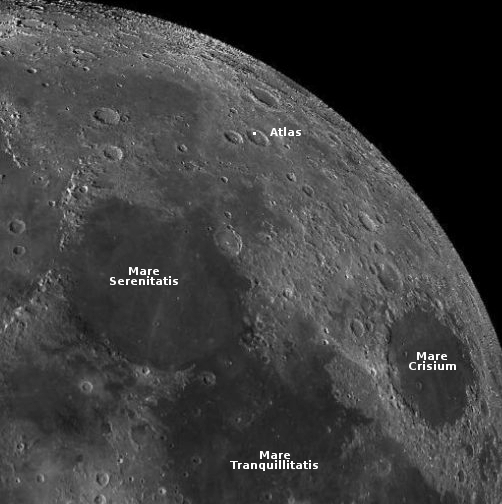
Hakuto-R1’s planned landing site is in Atlas Crater.
According to the Hakuto-R1 engineering team, the lander provided full data and maintained communications right up until touchdown, but at that point they lost contact with the spacecraft.
The loss of data at landing suggests something went wrong at touchdown. That they were able to maintain contact until then, and the data appeared correct, suggests that the spacecraft descended properly into Atlas Crater, but then touched down on some rough ground that either caused it to topple, or damaged it on contact.
This remains speculation however. We will have to wait for a full update from Ispace.
This was a engineering mission to test the company’s spacecraft design and its ability to operate a lunar mission. The failure at landing means it achieved about 8 to 9 of its 10 milestones. How this final failure will effect its next mission as well as its contract with NASA remains unclear.

Hakuto-R1’s planned landing site is in Atlas Crater.
According to the Hakuto-R1 engineering team, the lander provided full data and maintained communications right up until touchdown, but at that point they lost contact with the spacecraft.
The loss of data at landing suggests something went wrong at touchdown. That they were able to maintain contact until then, and the data appeared correct, suggests that the spacecraft descended properly into Atlas Crater, but then touched down on some rough ground that either caused it to topple, or damaged it on contact.
This remains speculation however. We will have to wait for a full update from Ispace.
This was a engineering mission to test the company’s spacecraft design and its ability to operate a lunar mission. The failure at landing means it achieved about 8 to 9 of its 10 milestones. How this final failure will effect its next mission as well as its contract with NASA remains unclear.
Review of InSight data allows scientists to further refine their model of Mars’ interior
Using archive data from the now defunct InSight Mars lander, especially two seismic detections that came from the planet’s far side, scientists now believe that Mars’ central core is significantly different than Earth’s, being entirely liquid and made up of much lighter materials than expected.
To determine these differences, the team tracked the progression of two distant seismic events on Mars, one caused by a marsquake and the other by a large impact, and detected waves that traveled through the planet’s core. By comparing the time it took those waves to travel through Mars compared to waves that stayed in the mantle, and combining this information with other seismic and geophysical measurements, the team estimated the density and compressibility of the material the waves traveled through. The researchers’ results indicated that Mars most likely has a completely liquid core, unlike Earth’s combination of a liquid outer core and solid inner core.
Additionally, the team inferred details about the core’s chemical composition, such as the surprisingly large amount of light elements (elements with low atomic numbers)—namely sulfur and oxygen—present in Mars’ innermost layer. The team’s findings suggested that a fifth of the core’s weight is made up of those elements. This high percentage differs sharply from the comparatively lesser weight proportion of light elements in Earth’s core, indicating that Mars’ core is far less dense and more compressible than Earth’s core, a difference that points to different conditions of formation for the two planets.
These differences, if confirmed, would certainly affect the way Mars’ surface evolved over the eons, and might help explain its giant volcanoes as well as the planet’s lack of a magnetic field.
The results however remain uncertain, because InSight provided only one seismometer on Mars. To better triangulate the data will require more than one, in the future.
Using archive data from the now defunct InSight Mars lander, especially two seismic detections that came from the planet’s far side, scientists now believe that Mars’ central core is significantly different than Earth’s, being entirely liquid and made up of much lighter materials than expected.
To determine these differences, the team tracked the progression of two distant seismic events on Mars, one caused by a marsquake and the other by a large impact, and detected waves that traveled through the planet’s core. By comparing the time it took those waves to travel through Mars compared to waves that stayed in the mantle, and combining this information with other seismic and geophysical measurements, the team estimated the density and compressibility of the material the waves traveled through. The researchers’ results indicated that Mars most likely has a completely liquid core, unlike Earth’s combination of a liquid outer core and solid inner core.
Additionally, the team inferred details about the core’s chemical composition, such as the surprisingly large amount of light elements (elements with low atomic numbers)—namely sulfur and oxygen—present in Mars’ innermost layer. The team’s findings suggested that a fifth of the core’s weight is made up of those elements. This high percentage differs sharply from the comparatively lesser weight proportion of light elements in Earth’s core, indicating that Mars’ core is far less dense and more compressible than Earth’s core, a difference that points to different conditions of formation for the two planets.
These differences, if confirmed, would certainly affect the way Mars’ surface evolved over the eons, and might help explain its giant volcanoes as well as the planet’s lack of a magnetic field.
The results however remain uncertain, because InSight provided only one seismometer on Mars. To better triangulate the data will require more than one, in the future.
Astra confirms it is buying Ursa Major rocket engines for its Rocket-4 upper stage
Astra yesterday confirmed that it will be buying Ursa Major’s Hadley rocket engine for the upper stage of its Rocket-4, now tentatively scheduled for a first test launch later this year.
Astra has been tight-lipped about the new upper stage engine that would power its new Rocket 4, with CEO Chris Kemp only telling investors last year that the rocket’s substantially increased payload capacity was thanks in part to engine upgrades. Outsourcing the engine helps clarify how Astra was able to so quickly pivot its plans for Rocket 4, including doubling the launch vehicle’s payload capacity from 300 kilograms to 600 kilograms.
Ursa Major has already sold engines to several rocket companies and the government, including Phantom, Vector, Stratolaunch, and the Air Force. It is also building two different larger engines, Ripley and Arroway, with the latter aimed at replacing the engines Russia provided to ULA and Northrop Grumman.
Astra yesterday confirmed that it will be buying Ursa Major’s Hadley rocket engine for the upper stage of its Rocket-4, now tentatively scheduled for a first test launch later this year.
Astra has been tight-lipped about the new upper stage engine that would power its new Rocket 4, with CEO Chris Kemp only telling investors last year that the rocket’s substantially increased payload capacity was thanks in part to engine upgrades. Outsourcing the engine helps clarify how Astra was able to so quickly pivot its plans for Rocket 4, including doubling the launch vehicle’s payload capacity from 300 kilograms to 600 kilograms.
Ursa Major has already sold engines to several rocket companies and the government, including Phantom, Vector, Stratolaunch, and the Air Force. It is also building two different larger engines, Ripley and Arroway, with the latter aimed at replacing the engines Russia provided to ULA and Northrop Grumman.
China once again outlines its lunar base plans; Russia out? Project delayed?
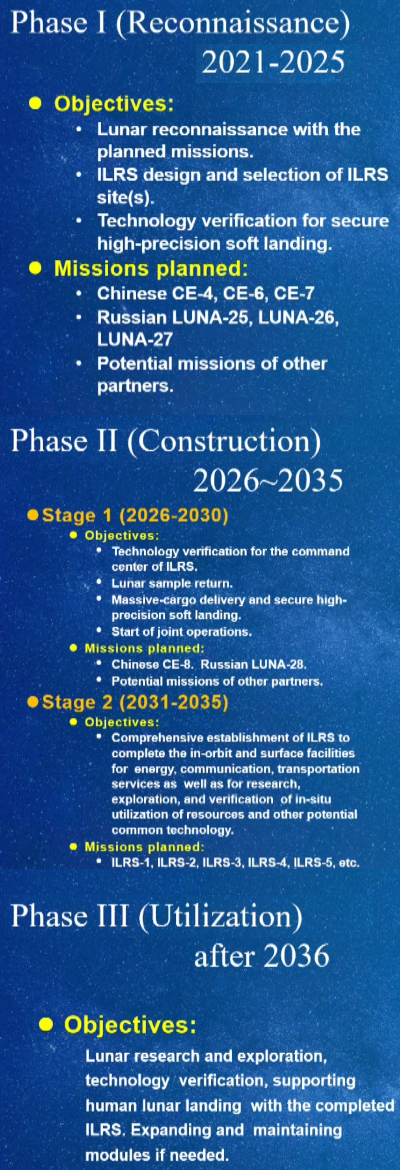
The original Chinese-Russian lunar base plan, from June 2021.
In outlining today China’s long term plans for establishing a manned lunar base near the south pole of the Moon, the project’s chief designer, Wu Weiren, revealed several changes in the program, almost all of which were indicated by what he did not say than what he did.
The graph to the right was released when this program was first announced in June 2021. At that time the plan was announced as a partnership of China and Russia, and was aiming to begin intermittent manned operations on the Moon in 2036.
According to Wu’s presentation today however, China apparently no longer considers Russia to be a full equal partner. It appears instead that Russia was mentioned as part of Wu’s effort to encourage many other countries to join the project. As reported by China’s state-run press:
During Tuesday’s event, Wu also highlighted the cooperation initiative for countries, organizations, and scientists worldwide to join the construction of the research station. In 2021, the China National Space Administration (CNSA) released a partnership guideline for the International Lunar Research Station.
That the state-run press made no mention of Russia in this description indicates strongly China’s devaluation of Russia’s contribution. This devaluation is not a surprise. As I noted in 2021,
[B]ased on Russia’s recent track record in the past two decades for promised space projects, we have no guarantee they will fly as scheduled, or even fly at all.
Since then Russia invaded the Ukraine and has suffered economically because of it. Its own first contribution to this partnership, Luna-25, has been delayed repeatedly, with its present launch now scheduled for July. It was always obvious that Russia — in its present state — could not match China, nor was it likely it would meet its promised targets.
Wu’s presentation also indicated that the third phase, when intermittent manned operations will begin, has been delayed from 2036 to 2040.
Overall, however, the Chinese plan remains stable and rational, and is likely to be carried out with reasonable success, based on how the country proposed and then achieved construction of its space station. The station was built essentially as described by the plan, with only a delay of a few years.

The original Chinese-Russian lunar base plan, from June 2021.
In outlining today China’s long term plans for establishing a manned lunar base near the south pole of the Moon, the project’s chief designer, Wu Weiren, revealed several changes in the program, almost all of which were indicated by what he did not say than what he did.
The graph to the right was released when this program was first announced in June 2021. At that time the plan was announced as a partnership of China and Russia, and was aiming to begin intermittent manned operations on the Moon in 2036.
According to Wu’s presentation today however, China apparently no longer considers Russia to be a full equal partner. It appears instead that Russia was mentioned as part of Wu’s effort to encourage many other countries to join the project. As reported by China’s state-run press:
During Tuesday’s event, Wu also highlighted the cooperation initiative for countries, organizations, and scientists worldwide to join the construction of the research station. In 2021, the China National Space Administration (CNSA) released a partnership guideline for the International Lunar Research Station.
That the state-run press made no mention of Russia in this description indicates strongly China’s devaluation of Russia’s contribution. This devaluation is not a surprise. As I noted in 2021,
[B]ased on Russia’s recent track record in the past two decades for promised space projects, we have no guarantee they will fly as scheduled, or even fly at all.
Since then Russia invaded the Ukraine and has suffered economically because of it. Its own first contribution to this partnership, Luna-25, has been delayed repeatedly, with its present launch now scheduled for July. It was always obvious that Russia — in its present state — could not match China, nor was it likely it would meet its promised targets.
Wu’s presentation also indicated that the third phase, when intermittent manned operations will begin, has been delayed from 2036 to 2040.
Overall, however, the Chinese plan remains stable and rational, and is likely to be carried out with reasonable success, based on how the country proposed and then achieved construction of its space station. The station was built essentially as described by the plan, with only a delay of a few years.
Watching live the landing of Hakuto-R1 on the Moon
I have embedded below the live stream of Hakuto-R1’s landing on the Moon, scheduled for today. The original landing time was targeting “approximately” 8:40 (Pacific), but it is now past that. That time might actually have indicated the start of the live stream. The lander is presently out of contact, on the far side of the Moon.
The landing is targeting the floor of Atlas Crater, located in the northeast quadrant of the visible hemisphere of the Moon.
I have embedded below the live stream of Hakuto-R1’s landing on the Moon, scheduled for today. The original landing time was targeting “approximately” 8:40 (Pacific), but it is now past that. That time might actually have indicated the start of the live stream. The lander is presently out of contact, on the far side of the Moon.
The landing is targeting the floor of Atlas Crater, located in the northeast quadrant of the visible hemisphere of the Moon.
April 24, 2023 Quick space links
Courtesy of BtB’s stringer Jay, who sent them on time but are being posted late because the creator of this website dropped the ball.
- A detailed analysis of Amazon’s proposed Kuiper constellation
Lots of great potentialities, but as always with Bezos space-related companies, little actual achievement, as yet.
- Global map of Mars produced by Tianwen-1 orbiter images
More significant is the announcement that Zhurong remains in hibernation mode.
- China’s space agency makes three rocket engines available for its pseudo-companies to buy
It also claims it can produce 300 engines per year.
- Another outsider’s perspective on the Starship/Superheavy test launch
I agree with Jay, her analysis is very refreshing, with exactly the right outlook.
- NASA considering shifting New Horizons from Kuiper Belt observations to solar observations, sooner that expected
The article is written entirely against this change, which if approved would occur in October 2024 instead of 2025. Though the New Horizons team is doing good research, they have not yet found another Kuiper asteroid target that New Horizons can get close to, and NASA management might be thinking the spacecraft could be better used studying the Sun from these distances.
- Celebrating the anniversary of the launch of the Hubble Space Telescope, 33 years ago today
The link shows video of the launch of Discovery, carrying Hubble.
Courtesy of BtB’s stringer Jay, who sent them on time but are being posted late because the creator of this website dropped the ball.
- A detailed analysis of Amazon’s proposed Kuiper constellation
Lots of great potentialities, but as always with Bezos space-related companies, little actual achievement, as yet.
- Global map of Mars produced by Tianwen-1 orbiter images
More significant is the announcement that Zhurong remains in hibernation mode.
- China’s space agency makes three rocket engines available for its pseudo-companies to buy
It also claims it can produce 300 engines per year.
- Another outsider’s perspective on the Starship/Superheavy test launch
I agree with Jay, her analysis is very refreshing, with exactly the right outlook.
- NASA considering shifting New Horizons from Kuiper Belt observations to solar observations, sooner that expected
The article is written entirely against this change, which if approved would occur in October 2024 instead of 2025. Though the New Horizons team is doing good research, they have not yet found another Kuiper asteroid target that New Horizons can get close to, and NASA management might be thinking the spacecraft could be better used studying the Sun from these distances.
- Celebrating the anniversary of the launch of the Hubble Space Telescope, 33 years ago today
The link shows video of the launch of Discovery, carrying Hubble.
Rick Wakeman – Journey To The Center Of The Earth
Pro-life students attacked with eggs at the University of Arizona

The egg-splattered display and camera for pro-life advocates. Click for original.
They’re coming for you next: Because they were manning a display advocating against abortion on the campus of the University of Arizona, several pro-life students found themselves attacked with eggs and their displays vandalized by numerous pro-abortion students.
You can see video and pictures of the violence and vandalism here, here, here, and here.
“A large group of students threw dozens of eggs at our signs, and three volunteers, including my 72-year-old father, were hit with eggs. We were informed by a College Republicans United member that the students got the eggs from the campus pantry,” Singleton told LifeNews.
One video shows dozens of smashed eggs on the ground around the display. Several pro-life advocates can be seen sheltering behind the display as sounds of more eggs being thrown are heard. Toward the end of the footage, a police officer escorts a female away from the scene.
This incident occurred on April 12, 2023. The next day a barrier was set up to protect the display and two cops were assigned to protect it.
» Read more

The egg-splattered display and camera for pro-life advocates. Click for original.
They’re coming for you next: Because they were manning a display advocating against abortion on the campus of the University of Arizona, several pro-life students found themselves attacked with eggs and their displays vandalized by numerous pro-abortion students.
You can see video and pictures of the violence and vandalism here, here, here, and here.
“A large group of students threw dozens of eggs at our signs, and three volunteers, including my 72-year-old father, were hit with eggs. We were informed by a College Republicans United member that the students got the eggs from the campus pantry,” Singleton told LifeNews.
One video shows dozens of smashed eggs on the ground around the display. Several pro-life advocates can be seen sheltering behind the display as sounds of more eggs being thrown are heard. Toward the end of the footage, a police officer escorts a female away from the scene.
This incident occurred on April 12, 2023. The next day a barrier was set up to protect the display and two cops were assigned to protect it.
» Read more
Ingenuity snaps picture of Perseverance during its 51st flight on Mars
On April 22, 2023 the Mars helicopter Ingenuity completed its fifty-first flight on Mars, flying 617 feet west for about 136 seconds at an altitude of about 39 feet. As has been routine for the past dozen or so flights, all these numbers were slightly higher than the flight plan, probably because the helicopter took extra time to find a good landing spot.
The panorama above, cropped, reduced, and enhanced to post here, was taken by Ingenuity about halfway through the flight. Unlike the black and white images that the helicopter takes looking straight down, this color image looks at an oblique angle of 22 degrees below the horizon. The colors are not corrected. The view looks east, looking backwards into Belva Crater. You can see Perseverance on the left, with its tracks cutting across the frame. Belva is filled with ripple dunes.
The blue dot on the overview map to the right marks Perseverance’s present position. The green dot marks Ingenuity’s take-off point, with the green line indicating the approximate flight path.
On April 22, 2023 the Mars helicopter Ingenuity completed its fifty-first flight on Mars, flying 617 feet west for about 136 seconds at an altitude of about 39 feet. As has been routine for the past dozen or so flights, all these numbers were slightly higher than the flight plan, probably because the helicopter took extra time to find a good landing spot.
The panorama above, cropped, reduced, and enhanced to post here, was taken by Ingenuity about halfway through the flight. Unlike the black and white images that the helicopter takes looking straight down, this color image looks at an oblique angle of 22 degrees below the horizon. The colors are not corrected. The view looks east, looking backwards into Belva Crater. You can see Perseverance on the left, with its tracks cutting across the frame. Belva is filled with ripple dunes.
The blue dot on the overview map to the right marks Perseverance’s present position. The green dot marks Ingenuity’s take-off point, with the green line indicating the approximate flight path.
The climb into Gediz Vallis
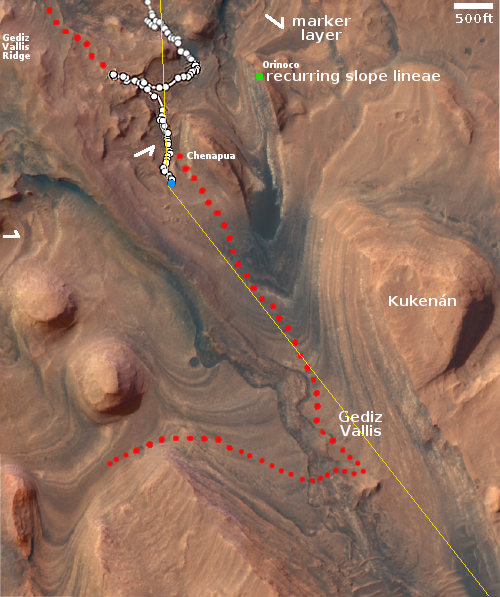
Click for interactive map.
After three months traversing the geological layer that the scientists have dubbed the Marker Band, Curiosity has now climbed higher, passing what I dubbed the Hill of Pillows on the west so that it is now in a position to return to its planned route up Mount Sharp, as indicated by the red dotted line in the overview map to the right and the panorama above.
The panorama, cropped, reduced, and annotated to post here, was created on April 24, 2023 using 31 images from the rover’s right navigation camera. The yellow lines on the overview map indicate approximately the area covered, with the blue dot marking Curiosity’s present position.
For scale, the top of Kukenan is about 5,200 feet above Curiosity, while the top of Chenapua is only about 115 feet higher. The white flanks are about 3,200 feet above Kukenan, and are about 4 to 5 miles away.
Looking back, the rim of Gale Crater on the far left of the panorama is about 20 miles away.

Click for interactive map.
After three months traversing the geological layer that the scientists have dubbed the Marker Band, Curiosity has now climbed higher, passing what I dubbed the Hill of Pillows on the west so that it is now in a position to return to its planned route up Mount Sharp, as indicated by the red dotted line in the overview map to the right and the panorama above.
The panorama, cropped, reduced, and annotated to post here, was created on April 24, 2023 using 31 images from the rover’s right navigation camera. The yellow lines on the overview map indicate approximately the area covered, with the blue dot marking Curiosity’s present position.
For scale, the top of Kukenan is about 5,200 feet above Curiosity, while the top of Chenapua is only about 115 feet higher. The white flanks are about 3,200 feet above Kukenan, and are about 4 to 5 miles away.
Looking back, the rim of Gale Crater on the far left of the panorama is about 20 miles away.
Al-Amal snaps first close-up images of Martian moon Deimos
During its first close fly-by of the Martian moon Deimos on March 10, 2023, the United Arab Emirates Mars orbiter Al-Amal (“Hope” in English) obtained the first close-up images of the moon.
The picture to the right show Deimos with Mars in the background. The full set of images, compiled into a movie, can be seen by clicking on the image.
The results were outlined by science lead Hessa Al Matroushi at a conference today.
During the 10 March fly-by, the mission team used all three onboard instruments to take readings spanning from the infrared to the extreme ultraviolet. The relatively flat spectrum the scientists saw is suggestive of the type of material seen on Mars’s surface, rather than the carbon-rich rock often found in asteroids, suggesting that Deimos was formed from the same material the planet. “If there were carbon or organics, we would see spikes in specific wavelengths,” she says.
These results probably put an end to the theory that Mars’ moons came from the asteroid belt. Instead, they either formed when the planet did, or were thrown free and settled into orbit after a very large impact, such as the ones that created either the Hellas or Argyre basins, both of which happened several billion years ago and thus provide ample time for the space environment to smooth the moon’s surface and add some craters.
During its first close fly-by of the Martian moon Deimos on March 10, 2023, the United Arab Emirates Mars orbiter Al-Amal (“Hope” in English) obtained the first close-up images of the moon.
The picture to the right show Deimos with Mars in the background. The full set of images, compiled into a movie, can be seen by clicking on the image.
The results were outlined by science lead Hessa Al Matroushi at a conference today.
During the 10 March fly-by, the mission team used all three onboard instruments to take readings spanning from the infrared to the extreme ultraviolet. The relatively flat spectrum the scientists saw is suggestive of the type of material seen on Mars’s surface, rather than the carbon-rich rock often found in asteroids, suggesting that Deimos was formed from the same material the planet. “If there were carbon or organics, we would see spikes in specific wavelengths,” she says.
These results probably put an end to the theory that Mars’ moons came from the asteroid belt. Instead, they either formed when the planet did, or were thrown free and settled into orbit after a very large impact, such as the ones that created either the Hellas or Argyre basins, both of which happened several billion years ago and thus provide ample time for the space environment to smooth the moon’s surface and add some craters.
Update on lunar orbiter CAPSTONE
Link here. The update comes from Advanced Space, the commercial company tasked by NASA with operating the orbiter, whose main goal its to test operations in the type of orbit around the Moon that NASA plans to put its Lunar Gateway space station, dubbed a Near Rectilinear Halo Orbit (NRHO).
Thus far, since performing the NRHO insertion maneuver on November 13th, 2022, the spacecraft has spent 154 days operating in the NRHO completing 23 NRHO revolutions. During this time, the mission team has maintained knowledge of the spacecraft state well within the mission requirements using ground-based navigation tools and tracking measurements collected by the Deep Space Network including DSS-17 which is an affiliated site at Morehead State University in Kentucky. This navigation information has continued to support the design and execution of required maneuvers to maintain the orbit.
Minimum maneuver size constraints have been sequentially reduced as the combined mission operations teams at Advanced Space, Terran Orbital, and Stellar Exploration continue to mitigate issues with a thruster valve. Since entering the NRHO the spacecraft has executed six Orbit Maintenance Maneuvers (OMM) using approximately 1.8 m/s of fuel. Although the mission plan was originally to do a maneuver every NRHO (approximately once a week), the higher burn threshold has reduced the number of maneuvers performed while also demonstrating the robustness of the stationkeeping strategy utilized by the mission which is the same strategy planned for the Lunar Gateway.
CAPSTONE’s primary mission ends in May, but it will continue on an extended mission for twelve more months.
Though CAPSTONE has provided NASA important orbital data for maintaining Lunar Gateway in lunar orbit, the orbiter’s biggest achievement is its commercial nature. NASA hired Terran Orbital to build it, Rocket Lab to launch it, and Advanced Space to operate it. There was relatively little government participation. Moreover, this privately-run project has demonstrated that an inexpensive smallsat can quickly accomplish the same things that once only big expensive satellites attempted.
Link here. The update comes from Advanced Space, the commercial company tasked by NASA with operating the orbiter, whose main goal its to test operations in the type of orbit around the Moon that NASA plans to put its Lunar Gateway space station, dubbed a Near Rectilinear Halo Orbit (NRHO).
Thus far, since performing the NRHO insertion maneuver on November 13th, 2022, the spacecraft has spent 154 days operating in the NRHO completing 23 NRHO revolutions. During this time, the mission team has maintained knowledge of the spacecraft state well within the mission requirements using ground-based navigation tools and tracking measurements collected by the Deep Space Network including DSS-17 which is an affiliated site at Morehead State University in Kentucky. This navigation information has continued to support the design and execution of required maneuvers to maintain the orbit.
Minimum maneuver size constraints have been sequentially reduced as the combined mission operations teams at Advanced Space, Terran Orbital, and Stellar Exploration continue to mitigate issues with a thruster valve. Since entering the NRHO the spacecraft has executed six Orbit Maintenance Maneuvers (OMM) using approximately 1.8 m/s of fuel. Although the mission plan was originally to do a maneuver every NRHO (approximately once a week), the higher burn threshold has reduced the number of maneuvers performed while also demonstrating the robustness of the stationkeeping strategy utilized by the mission which is the same strategy planned for the Lunar Gateway.
CAPSTONE’s primary mission ends in May, but it will continue on an extended mission for twelve more months.
Though CAPSTONE has provided NASA important orbital data for maintaining Lunar Gateway in lunar orbit, the orbiter’s biggest achievement is its commercial nature. NASA hired Terran Orbital to build it, Rocket Lab to launch it, and Advanced Space to operate it. There was relatively little government participation. Moreover, this privately-run project has demonstrated that an inexpensive smallsat can quickly accomplish the same things that once only big expensive satellites attempted.
India’s PSLV rocket successfully launches two Singapore satellites
India’s PSLV rocket today successfully put two Singapore satellites into orbit, one a radar satellite and the other a large cubesat testing smallsat communication technologies.
The leaders in the 2023 launch race:
25 SpaceX
16 China
6 Russia
3 Rocket Lab
3 India
American private enterprise still leads China 28 to 16 in the national rankings, and is tied at 28 with the entire world combined.
India’s PSLV rocket today successfully put two Singapore satellites into orbit, one a radar satellite and the other a large cubesat testing smallsat communication technologies.
The leaders in the 2023 launch race:
25 SpaceX
16 China
6 Russia
3 Rocket Lab
3 India
American private enterprise still leads China 28 to 16 in the national rankings, and is tied at 28 with the entire world combined.
April 21, 2023 Zimmerman/Batchelor podcast
Embedded below the fold in two parts.
To listen to all of John Batchelor’s podcasts, go here.
» Read more
Embedded below the fold in two parts.
To listen to all of John Batchelor’s podcasts, go here.
» Read more
The view from the racecar of the Le Mans race course, as seen in 1968
An evening pause: From the youtube page:
This amazing piece of ground breaking onboard footage allows us to ride onboard one of the Gulf sponsored JWA Ford GT40s for a lap of the Le Mans circuit in 1968. This early onboard coverage was such a big deal, Stirling Moss does the narration. Its cool to see the Le Mans circuit as it was, without chicanes and with primitive safety features.
Hat tip Tom Biggar.


